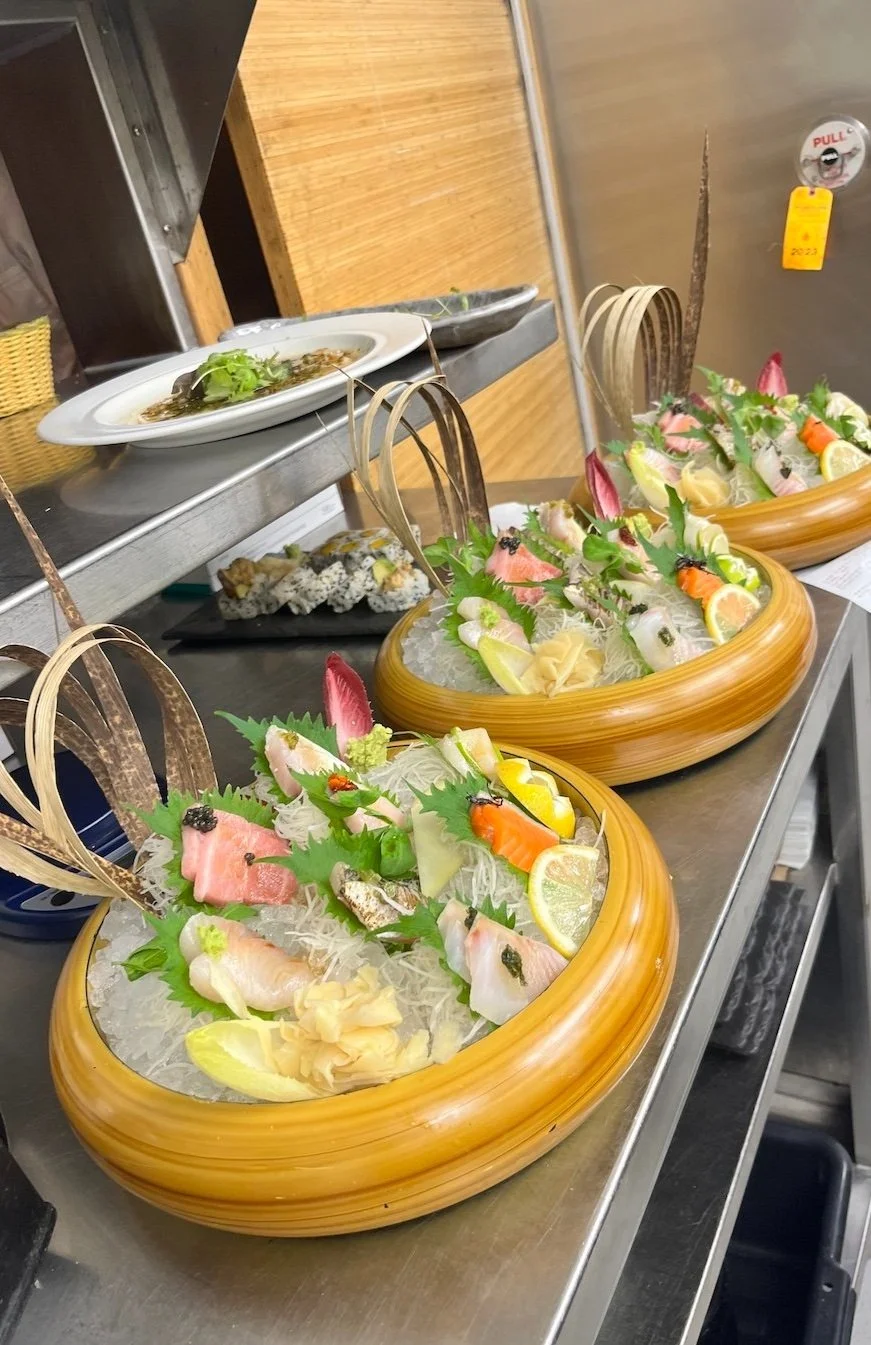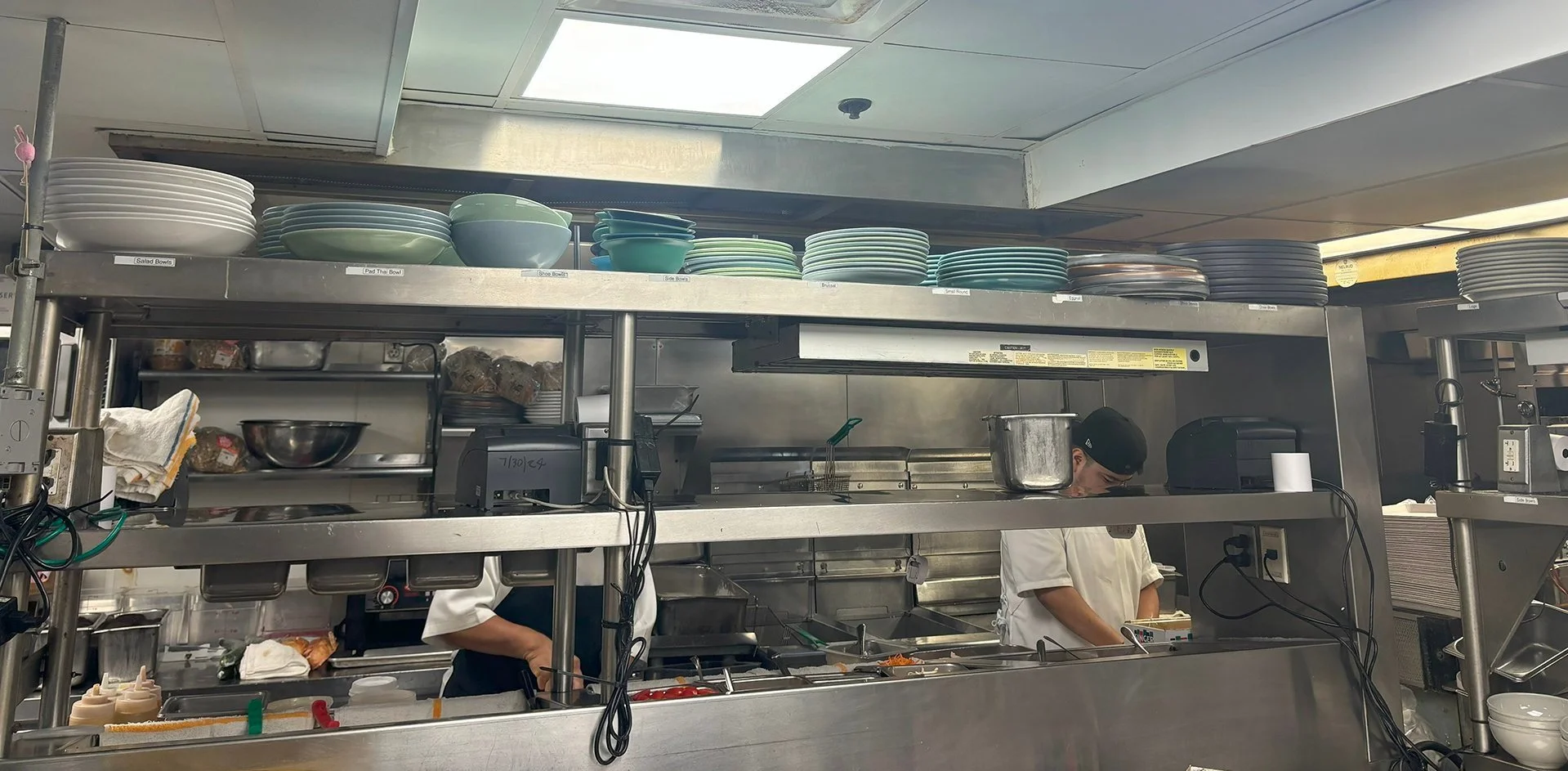Blood, Sweat, and Extra Ketchup: The Diary of a Restaurant Worker
Whether feasting at a Michelin-star restaurant or snagging a quick Reuben at a mom-and-pop diner, the culinary experience is a vital part of celebration and a foolproof way to make lasting memories. As the guest, you see an effortless dance of plates gliding to and from the kitchen, cups refilled before they empty, and a smile at every interaction. But behind the swinging aluminum doors, an entirely different reality resides—screaming chefs, micro-managers, and the dread of yet another customer tantrum. Workers make their daily dollar inside a pressure cooker of exhaustion and have no choice but to endure it all with a grin.
After over three years of working as a food runner, server, and barista across five of Philadelphia’s most bustling restaurants, I’ve seen the good, the bad, and the ugly of the industry: moments of camaraderie and laughter but also burn-out, exploitation, and abuse written off as “just part of the job.” We’re going to talk about the ups, downs, and sub-minimum wages of restaurant work—the realities that aren’t written on the menu but define the industry just as much as the food itself.
Morimoto sushi
When I first started in the service industry at Morimoto, a fine-dining Japanese restaurant owned by Stephen Starr, the most grueling thing I had to come to terms with was the culture of overwork. Long hours and no breaks are the standard—front-of-house and back-of-house alike spend hours on their feet, and the expectation to keep a relentless pace is part of the gig. As a food runner, this sometimes meant ten hours straight of climbing up and down stairs holding trays loaded with plates, trying to keep sweat from dripping into someone’s food. Sometimes, a single shift turns into a double, and, as a cherry on top, you don’t have a designated clock-out time. If the guests keep requesting tables, grab a sleeping bag—it’s you and the kitchen’s pests tonight.
This may be confusing to a diner, considering the laws mandating breaks in the workplace. As a worker in a restaurant, however, taking ten minutes to eat or sit down is considered a luxury rather than a right. Positano Coast in Old City does not close in between shifts to allow their staff to recoup, and more often than not, I was mid-bite in my long-awaited ‘family meal’ before the expeditor on shift swooped in like a New Jersey seagull and gave me another dish to run. Let’s not forget—you can consider yourself lucky if a manager doesn’t storm into the kitchen and hurl your food into the trash before you’re even halfway done. If that’s the case, pray that a dish ‘dies’ in the hot window so the staff can pounce on it like vultures fighting over scraps.
Me Picking Up To Go Ramekins
Don’t get me started on when that chef is on shift—just standing in the kitchen is enough for my heart to think I’m doing a full-on zone 2 cardio workout. My last chef was a ticking time bomb—if it slipped my mind to distribute ticket rolls to each line cook (among the other seventy things on my plate), I was in the market for a shift-long masterclass in humiliation. Sometimes, it felt like a toxic relationship—one minute, we’re laughing about the New York Giants’ latest failure, and the next, I’m dodging flying plates and insults that feel like shrapnel. Sure, it’s a minimum-wage job, but how much slander can you take before you end up in the bathroom having a cry-sesh? If you don’t believe me, take it from a former banquet server at Anthony’s Ristorante: “Nothing beats the night our banquet manager and head chef—both 6’4”—literally threw hands outside by the dumpsters over a cut finger. Honestly, I just wish I’d seen it.”
Want to request off for holidays to spend them with your loved ones? No can do! They’re the busiest and most demanding nights of the year. Just this past New Year’s, while working in The Continental Midtown—yet another restaurant owned by Stephen Starr—I witnessed the devastating consequence of restaurant stress. The social lubricant and silent killer, alcohol, was put into action. Once the tray of complimentary champagne came out at midnight, the entire restaurant staff lurched forward in a frenzy, seizing a glass, or two, or three. At that moment, I couldn’t tell if the calendar switch was a celebration or a surrender.
The use of alcohol as a crutch was daunting to me when I first started in restaurants. While it can start with a cocktail after hours to socialize and unwind, it can quickly become a dangerous coping mechanism that threatens to consume lives, both on and off the clock. I saw it firsthand: the physical and mental demand in restaurants made it almost inevitable that some industry veterans would take to alcohol to escape the pressure and stress of the job. Although I wasn’t a participant, I noticed how an innocent, once-in-a-blue-moon beer can quickly spiral out of control—soon enough, you’re drinking not only after work but also during work.
By the way, dear entitled customer, you don’t know the owner. Some diners seem to think restaurant workers are personal punching bags combined with dedicated servants. I’ve seen it all: finger snappers, serial complainers, and self-seaters who avoid eye contact with the host stand like it’s the plague. A former Morimoto hostess had a wild experience with a party she knew all too well: “One time, we were super backed up, and some parties had to wait in the lounge. I finally take this group to their table, and as I’m leading them, I heard them bad-mouthing me—in my native language. They had no idea I could understand every word.” The nerve.
Then there are the dietary liars—I’ll never forget when someone told me they’re allergic to salt to take the half-eaten edamame bowl off the check. Let’s not forget the parents who let their kids run around the dining room like it’s a playground while I’m dodging them, holding a bowl of scalding hot soup. At the end of the night, you’re left wondering if people are as allergic to the words “thank you” as they claim to be to gluten—at least until the breadbasket arrives.
The reality is that no one should have to endure abuse and sacrifice personal well-being to earn a paycheck. Restaurants make their buck on hospitality, which should extend to the staff just as much as the guests. However, this begs the question: how do we take steps forward in redoing the system when it’s so well-ingrained? How do we replace the dog-eat-dog mentality with a work-life that celebrates teamwork and camaraderie? Just to be clear—I’ve made wonderful friends in the restaurant industry with people I never would have met otherwise. A woman in her 40s gave me high-end, unopened skincare products to take to my mom as a birthday gift. The line cook who would slip me a slice of A5 wagyu when the executive chef wasn’t looking was the highlight of my night. The sous chef I spoke my native language with was sometimes the sole reason I came to work. By acknowledging the shortcomings and hidden challenges of the industry, we can create a space to embrace vulnerability and allow culinary greatness and personal well-being to exist side-by-side.
As the diner, next time your steak comes a little too rare or your cocktail takes five minutes longer to prepare than you expected, take a deep breath and suppress your inner food critic. Behind every hospitable smile and perfectly curated dish is a stainless steel-lined kitchen filled with frenzied, underpaid workers running on caffeine, adrenaline, and the will to survive to the next shift. Your server probably hasn’t sat down in six hours, your bartender definitely hasn’t heard that “fun” drink order sixty times this shift, so tip well. Be patient. Most of all, maybe—just maybe—offer a kind word rather than a Karen-level complaint. Trust me, we need it.



